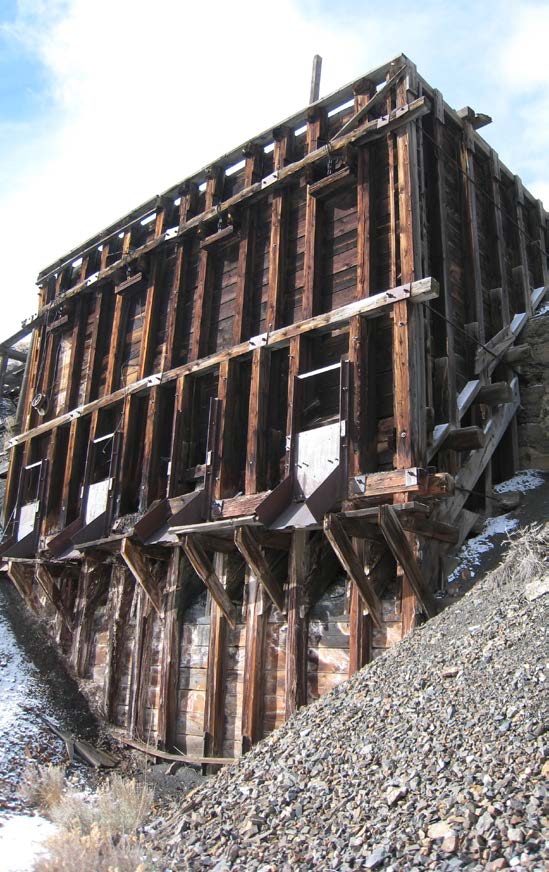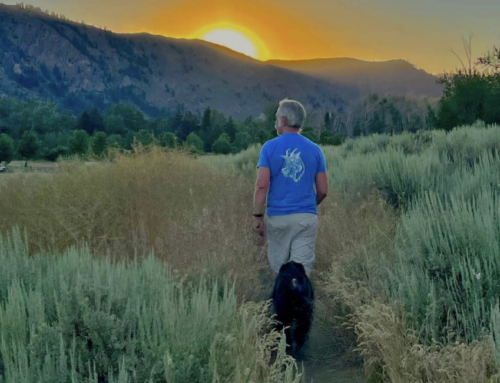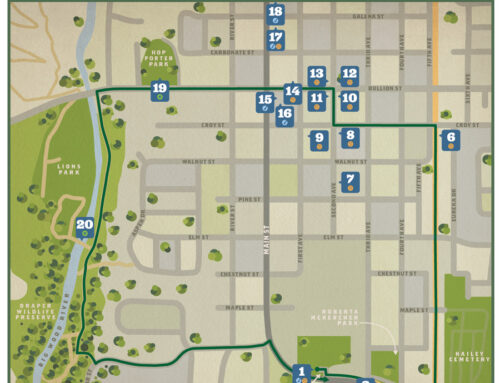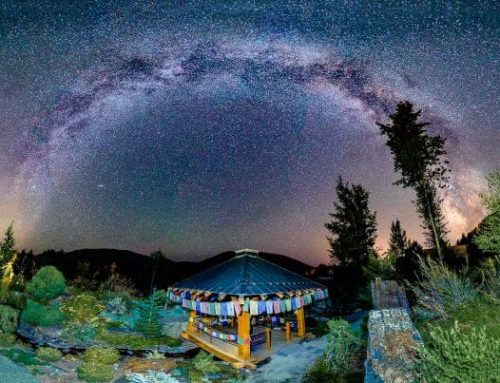
Old Triumph Mine Tipple
Triumph was the location of the famous Triumph
mine, which closed in 1957 after a history of producing
millions of dollars in silver and lead since its discovery
in the late nineteenth century.
LEAD, GOLD AND SILVER–OH MY!
Wood River Valley Mining History
BY JENNIFER STAHL
The Wood River Valley is a place with a long and colorful history. One of the most notable chapters is the late-nineteenth-century mining boom that drew fortune hunters from far and wide to this rugged part of Idaho. Numerous small towns and settlements sprang up to accommodate the thousands of people working in mines. Today, only three mining towns from that era remain in the Wood River Valley—Ketchum, Hailey and Bellevue. However, several mining “ghost towns” are still accessible to those interested in local history. The easiest of these to find is Triumph, located 12 miles from Hailey on East Fork Road. The Triumph mine was mined until 1957, and a huddle of small houses (most of which are original buildings) still form the core of the community along with old mining cars and mining structures.
East of Bellevue, the early mining settlement of Muldoon is evidenced only by a black slag pile and vestiges of 23 charcoal kilns. West of town along Broadford Road lies the remains of the Minnie Moore and Queen of the Hills mines. Queen of the Hills was actively mined until 1970. From a distance, little can be seen of the remains of the mines of Boulder Basin north of Ketchum. A steep jeep trail leads to Boulder Basin north of the Sawtooth National Recreation Area headquarters. The site includes several old cabins, diggings of old mines, mining equipment, and amazing views. It’s a tough trek, but well worth the trip.
Galena, the earliest mine in the area, was established by David Ketchum. It is easily accessible from Highway 75. The lodge, situated on the old townsite, has been remodeled and today serves tasty meals to visitors. Cabins and a network of biking and cross-country skiing trails now sit on what is left of the town.
In 1880, when silver was discovered in the mountain gulches near the Wood River, the valley surged with miners, merchants, mule skinners, gamblers and desperados. They lived in hastily built cabins and tents as saloons and stores were being constructed.
The first year was one of prospecting and laying out claims. North of Galena, east of Ketchum and west of Hailey, boomtowns were rising from the dirt. Nineteen different mines shipped more than 600 tons of ore by wagon to Kelton and then by rail to Salt Lake City. Most miners spent the winter in Bellevue, where there
was access to a store, a restaurant, a blacksmith and a saloon. The miners skied by day, danced by night, and stuffed themselves with venison.
Isaac Lewis was the first to invest money and mining equipment in the Wood River Valley. The largest and most successful smelter was the Philadelphia smelter at the mouth of Warm Springs Creek in Ketchum. Until the arrival of the railroad in 1883, travel and transport were limited to stagecoach, wagon and horseback, making the export of ore both difficult and expensive. Railroads caused prices to drop both to import goods and export ore, further enhancing the economics of the time. The low price of silver and the depression of 1893 ended the mining boom of the Wood River Valley, although a few mines remained active into the 1950s and 1960s.





